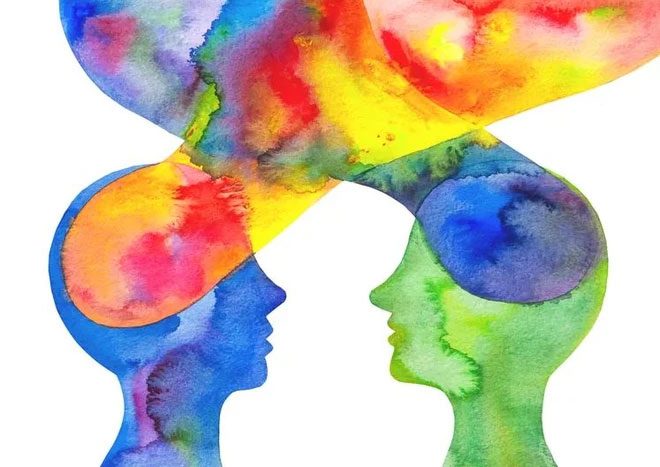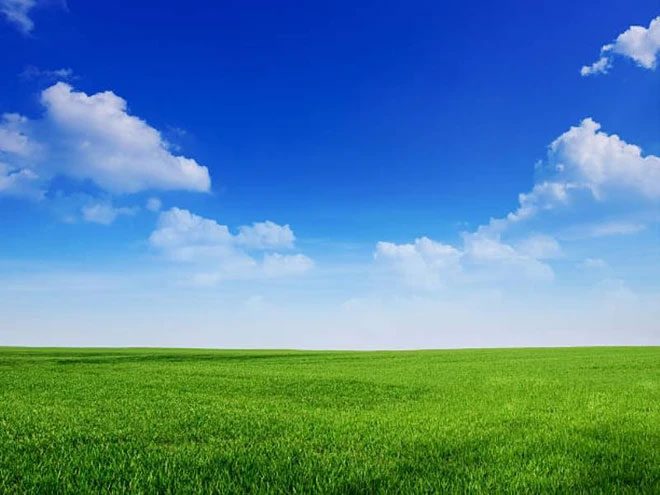Colors are a powerful communication tool that can influence emotions, moods, and even physiological responses in humans.
Do you feel energized when you see red? Does blue make you feel calm and relaxed? Color psychology has proven that your emotions and behaviors can be affected by different colors.

Your emotions and behaviors can be influenced by colors. (Image source: Getty).
According to a study published in the Journal of Psychological Science, people worldwide share common associations between certain colors and the same emotions.
Researchers from various institutions, including Johannes Gutenberg University Mainz in Germany and the University of Lausanne in Switzerland, surveyed 4,598 people from 30 countries across six continents. Participants were asked to assign up to 20 emotions to 12 different colors.
The results indicated that there are universal reactions to colors. For example, the color red consistently elicits similar responses related to love and anger.
Even when we are not consciously aware of colors, our minds still react to them.
Famous painter Pablo Picasso once stated: “Color, like form, follows the changes of emotion.”
Dr. Rachel Goldman, a psychologist at NYU Grossman School of Medicine, also affirms that “Colors can truly affect our mood and behavior.”
Research indicates that while color perception is somewhat subjective, certain colors evoke universal effects.
For instance, colors in the red region of the color spectrum are referred to as warm colors, including red, orange, and yellow. These warm hues can evoke a range of feelings, from warmth and comfort to anger and hostility.
Colors on the blue side of the spectrum are known as cool colors, which include blue, purple, and green. These colors are often described as soothing but can also evoke feelings of sadness or indifference.

Even when we are not aware of colors, our minds still respond to them. (Source: Verywell Mind)
Eiseman, the Executive Director of the Pantone Color Institute and head of the Eiseman Color Training and Information Center, suggests that the universal emotional connections of different colors may stem from the influence of the natural world around us.
She hypothesizes that we start forming positive emotions about colors found in nature, such as golden sunlight or a clear blue sky, from an early age.
Eiseman analyzes the emotions we experience from the most common colors in our daily lives.
Red
Eiseman explains that there is a reason people are drawn to red items, such as a red decorative piece or a vibrant red dress.
She describes red as the “most deadly popular color” in nature (associated with the color of fire). This is the color of energy, action, ambition, and determination. It is also the color of anger and passionate love.
Yellow
“Bright yellow stimulates us like sunlight, associated with happiness and joy – cheerful, energetic, and fresh emotions,” Eiseman states.
This is why yellow is often used in children’s toys.
Some interior designers recommend avoiding bright yellow in bedrooms as it has a lively effect that can hinder sleep.
Sky Blue
Sky blue is a favored color for corporate logos, from airlines to tech and pharmaceutical companies.
 Sky blue and green evoke freshness and peace. (Photo: iStock).
Sky blue and green evoke freshness and peace. (Photo: iStock).
Eiseman notes that this color conveys feelings of trust, responsibility, and safety – a reaction likely formed from our earliest perceptions of the blue sky.
Sky blue also symbolizes freshness and tranquility, providing physical and mental relaxation.
Green
Eiseman states that we perceive shades of green more easily than any other color because it is prevalent throughout the Earth – the color of nature.
Green is an emotionally positive color, helping to refresh and restore depleted energy, allowing us to love ourselves and others.
In fact, the trend of using green is popular in settings such as hospitals and assisted living facilities to provide a pleasant and reassuring atmosphere. Many individuals also choose green for their offices.
Brown
Brown relates to the quality of all things – a cozy home, the color of rich chocolate or coffee, and loyal friendships. This is the color of physical comfort, simple yet quality.
Brown is also a color of structure; while it does not encourage perfectionism, it promotes orderliness and organization.
Along with green, brown is one of the two dominant colors on the planet. Brown provides comfort and stability, while green brings balance and rejuvenation, which we all need to help us cope with the stresses of modern life.


















































